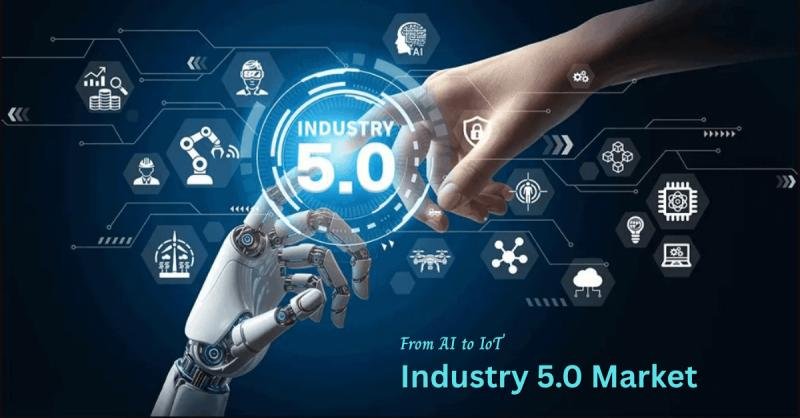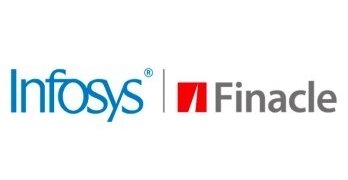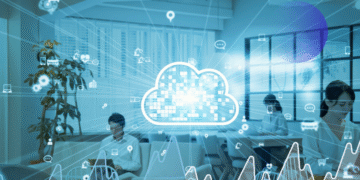Market Outlook
The Industry 5.0 Market is undergoing a revolutionary transformation, with a valuation of USD 71,786 million in 2024, projected to surge to USD 581,270 million by 2032, registering a robust CAGR of 29.88%. This reflects a monumental shift in how businesses integrate emerging technologies with the human workforce. Unlike Industry 4.0, which emphasized automation, Industry 5.0 centers on collaboration between humans and smart machines. This alignment is redefining efficiency, flexibility, and creativity across all sectors. The growing emphasis on personalized production and sustainability adds further relevance to this evolution. As the global economy strives for resilience and adaptability, Industry 5.0 provides the framework for a responsive and inclusive industrial future.
A key factor driving the market is the need for customization in real-time, facilitated by intelligent systems that respond to dynamic consumer demands. In industries like healthcare, automotive, and fashion, hyper-personalization is becoming a competitive differentiator. Industry 5.0 enables this by combining AI-powered decision-making with human-centric design processes. The convergence of digital twins, cobots, and adaptive robotics contributes to faster development cycles and smarter production environments. This synergy not only improves output but also supports ethical design and operational transparency. Organizations embracing these principles are gaining a clear edge in innovation-led growth.
Furthermore, governments and institutions are recognizing the strategic value of Industry 5.0 in building national manufacturing resilience. Initiatives aimed at digital upskilling, SME modernization, and green industrial policy are accelerating technology adoption across both developed and emerging economies. Enhanced regulatory frameworks are supporting open innovation ecosystems, especially in Europe and Asia Pacific. Investment in R&D and cross-sector collaboration is increasing, laying the groundwork for new business models. These shifts also align with global efforts to meet climate and social impact goals. As such, Industry 5.0 is being positioned not just as a technological upgrade, but as a blueprint for responsible industrial transformation.
Industry 5.0 is also redefining operational risk management through the integration of smart monitoring systems and real-time data analytics. By enabling predictive maintenance and intelligent fault detection, companies can prevent disruptions and ensure business continuity. This is particularly crucial in high-stakes industries like aerospace, pharmaceuticals, and energy. Advanced cybersecurity protocols are also being embedded into connected systems to guard against data breaches and industrial espionage. The result is a secure and agile infrastructure that supports both innovation and resilience. As cyber-physical integration deepens, the ability to maintain robust safeguards becomes a core competency in Industry 5.0 strategy.
Another significant development is the integration of sustainability KPIs into smart manufacturing processes. Companies are leveraging AI and IoT to monitor energy consumption, waste generation, and carbon emissions in real-time. This shift is driving accountability and enabling continuous improvement in ESG performance. Sustainable manufacturing practices are not only being encouraged through policy but are also influencing investor preferences and consumer trust. Green factories, circular supply chains, and energy-efficient production lines are gaining momentum globally. Industry 5.0 empowers businesses to align profitability with environmental responsibility, offering a compelling model for the future of industrial development.
Preview the report with a detailed sample and understand how it can benefit your business strategy. Request a free sample today – https://www.credenceresearch.com/report/industry-5-0-market
Market Drivers
Human-Centric Design Adoption
The transition toward Industry 5.0 places human needs and ergonomics at the core of industrial processes. Design thinking is now being integrated into factory operations to enhance user experience and safety. Machines are becoming more intuitive, enabling better synergy with human workers. Interfaces are designed to be accessible and user-friendly, even for non-technical employees. This fosters inclusivity and reduces the learning curve. The resulting increase in productivity and morale supports sustained growth.
Enhanced safety standards and real-time feedback loops also contribute to reducing workplace injuries. Companies are using biometric and gesture-based controls to empower human-machine interaction. These advances make workplaces not only efficient but also psychologically safer.
Adoption of Hyper-Automation
Hyper-automation combines AI, RPA, and machine learning to streamline complex workflows. It not only accelerates routine tasks but also enables systems to evolve through feedback. As businesses strive to reduce latency and errors, hyper-automation proves indispensable. This is especially vital in high-volume sectors like logistics and healthcare. Industry 5.0 integrates hyper-automation with human oversight, balancing speed and judgment. This convergence fosters a smarter and more adaptive production environment.
The ability to auto-correct and learn from exceptions adds resilience to digital operations. Cost reduction and quality control also improve significantly through hyper-automation. Its integration fosters a culture of continuous improvement.
Demand for Resilient Infrastructure
COVID-19 exposed vulnerabilities in global supply chains, prompting a reevaluation of industrial systems. Companies now prioritize resilience, flexibility, and risk mitigation in their infrastructure strategies. Industry 5.0 facilitates this by enabling real-time monitoring, predictive analytics, and rapid reconfiguration of processes. Such systems allow quick adaptation to supply-demand shifts. This capability is essential in today’s volatile global economy. Organizations embracing this model gain a competitive advantage in continuity planning.
Cloud-native solutions and edge computing are also boosting decentralization. Digital twins simulate crisis scenarios to identify weak spots in advance. These proactive approaches reduce operational downtime.
Integration of Ethical AI Frameworks
Ethical considerations are increasingly guiding technological deployment. Industry 5.0 promotes AI that is transparent, accountable, and aligned with societal values. These frameworks ensure that decision-making remains fair and inclusive. Ethical AI builds trust among stakeholders, especially in sectors like healthcare, finance, and public infrastructure. Governments and institutions are pushing for AI governance laws. This shift is critical to ensuring sustainable and responsible industrial growth.
Bias detection and mitigation tools are being embedded into AI pipelines. Companies are also creating internal ethics boards for oversight. The move fosters long-term stakeholder loyalty and brand integrity.
Market Challenges
Fragmented Global Standards
One of the primary hurdles in Industry 5.0 implementation is the absence of unified global protocols. Varying standards in AI, robotics, and data privacy complicate multinational deployment. Companies must adapt to different regional regulations, increasing compliance costs. This lack of consistency slows cross-border collaboration and innovation. It also leads to duplicated efforts in system customization. Standardization will be essential for widespread adoption.Without alignment, interoperability between platforms becomes cumbersome. Efforts like ISO and IEEE are making progress, but global consensus is slow. Policymakers must fast-track cooperative frameworks.
Limited Access to Skilled Talent
Despite technological progress, the supply of skilled professionals lags behind demand. Roles involving AI integration, robotics programming, and digital ethics remain hard to fill. This shortfall limits how quickly companies can scale Industry 5.0 projects. Many enterprises are now investing in training programs, but results take time. Without a robust talent pipeline, productivity gains remain uneven. Bridging this gap is vital for sustainable implementation.
University-industry partnerships are being strengthened to address this need. Online education platforms are expanding their Industry 5.0 course offerings. Still, upskilling must outpace tech advancements to remain effective.
High Complexity of Integration
Industry 5.0 involves merging multiple technologies, including AI, IoT, and human-machine interfaces. Synchronizing these components with minimal disruption is a complex task. Many legacy systems are incompatible or require expensive upgrades. Integration also demands extensive testing to ensure seamless operations. Companies must maintain service continuity while deploying new systems. Such complexity can slow momentum and inflate budgets.
Modular system design is gaining traction as a flexible solution. Enterprise Architecture (EA) frameworks are also being customized for integration planning. Nonetheless, change management remains a core obstacle.
Evolving Data Privacy Regulations
The increasing use of connected devices generates vast volumes of personal and operational data. Navigating privacy laws across jurisdictions is a growing concern. Non-compliance may lead to legal penalties and reputational damage. Businesses must invest in strong data governance frameworks. Ensuring data transparency and user consent is essential in trust-building. The evolving nature of privacy laws adds an extra layer of compliance complexity.
Emerging regions are adopting privacy laws inspired by GDPR and CCPA. Data localization policies are further complicating global data flow. Proactive auditing and encryption practices are now baseline requirements.
Market Opportunity
Growth of Personalized Consumer Experiences
Industry 5.0 empowers businesses to deliver products tailored to individual needs. AI algorithms analyze consumer behavior and adapt production accordingly. This capability is reshaping sectors like fashion, healthcare, and electronics. Customers receive faster, smarter, and more relevant services. Mass customization also helps reduce overproduction and waste. Companies offering such agility gain loyalty and higher lifetime value.
Digital avatars and virtual try-ons further enrich the personalization process. Subscription-based manufacturing models are emerging in consumer goods. The trend enhances brand affinity and improves forecasting accuracy.
Emergence of Smart Workspaces
The concept of smart workplaces goes beyond automated tasks to include real-time collaboration, energy optimization, and adaptive layouts. These environments enhance both productivity and well-being. Industry 5.0 technologies enable workers to interact with systems naturally. Intelligent lighting, temperature control, and predictive maintenance all contribute to efficiency. Such setups attract top talent and reduce overhead costs. The workspace becomes a strategic asset rather than a cost center.
AI-driven space utilization and safety protocols are gaining ground. Wearables monitor employee fatigue and adjust environmental parameters. Workplace-as-a-Service (WaaS) is an emerging operational model.
Applications in Education and Training
Immersive technologies powered by Industry 5.0, such as AR and VR, are redefining education and training. These tools provide real-world simulations and enhance hands-on learning. Industries use them for onboarding, upskilling, and safety compliance. Learners benefit from interactive, adaptive, and scalable instruction. Educational institutions are also adopting these tools to better align with workforce demands. This trend supports lifelong learning in a digital-first world.
Gamified learning platforms increase knowledge retention and engagement. Certification programs now include simulated environments. Training costs are reduced while effectiveness rises.
Rise of Decentralized Manufacturing Models
Industry 5.0 allows smaller, localized units to produce high-quality goods using advanced automation. This model reduces reliance on global supply chains. It also improves responsiveness to local market demands. 3D printing and modular robotics support efficient production in compact spaces. Decentralization enables companies to lower logistics costs and carbon emissions. Governments are also incentivizing regional manufacturing hubs.
Rural economies benefit from localized employment and resource use. On-demand production minimizes waste and excess inventory. Blockchain ensures transparency and traceability across distributed nodes.
Market Segmentation
By Component
• Hardware
• Software
• Services
By Technology
• Artificial Intelligence
• Robotics
• Human-Machine Interface
• Internet of Things (IoT)
• Digital Twin
• 3D Printing
By End-Use
• Manufacturing
• Healthcare
• Automotive
• Electronics
• Energy
• Logistics
By Geography
• North America
o U.S.
o Canada
o Mexico
• Europe
o UK
o France
o Germany
o Italy
o Spain
o Russia
o Belgium
o Netherlands
o Austria
o Sweden
o Poland
o Denmark
o Switzerland
o Rest of Europe
• Asia Pacific
o China
o Japan
o South Korea
o India
o Thailand
o Indonesia
o Vietnam
o Malaysia
o Philippines
o Taiwan
o Rest of Asia Pacific
• Latin America
o Brazil
o Argentina
o Peru
o Chile
o Colombia
o Rest of Latin America
• Middle East & Africa
o GCC Countries
o South Africa
o Rest of the Middle East and Africa
Regional Analysis
North America
North America leads in strategic investment across robotics, AI, and digital transformation. The U.S. drives innovation through public funding and private sector R&D collaboration. Canada and Mexico are leveraging trade alliances to promote smart manufacturing. Skill development programs are also advancing regional readiness. Investments in cybersecurity infrastructure further accelerate trust in Industry 5.0. This region’s mature tech ecosystem ensures early adoption.
Silicon Valley and Austin continue to attract global Industry 5.0 startups. Regulatory sandboxes are enabling controlled tech experimentation. Government grants support SME participation in digital adoption.
Europe
Europe positions Industry 5.0 within its green and digital transition policies. Germany is pioneering digital twins and collaborative robots. France and the UK focus on data ethics and AI governance. Eastern European countries are emerging as innovation hubs through EU-backed grants. Europe is also leading in circular manufacturing models. Harmonized regulations across the bloc support stable growth.
Pan-European testbeds facilitate cross-border pilot projects. The Green Deal aligns well with sustainable industrial practices. Workforce reskilling is backed by structural funding.
Asia Pacific
Asia Pacific is witnessing rapid transformation led by industrial powerhouses like China, Japan, and South Korea. India is focusing on skill development and innovation incubation centers. Southeast Asian economies are investing in smart infrastructure and logistics automation. Regional governments offer tax incentives and investment zones. Cross-border collaboration is increasing across R&D and manufacturing clusters. This region benefits from demographic dividends and market size.
5G infrastructure deployment boosts smart factory rollouts. National AI strategies are already being implemented at scale. Startups are emerging as agile partners for legacy industries.
Latin America
Latin America is gradually building its Industry 5.0 ecosystem through innovation hubs and tech parks. Brazil invests in smart agriculture and energy automation. Mexico supports automotive digitization through public-private projects. Chile and Colombia are adopting Industry 5.0 in mining and logistics. Access to venture capital remains a challenge but is improving. Education reforms are underway to build digital skills.
Cross-border collaborations with North American firms are gaining traction. Governments are incentivizing tech startups to drive local innovation. Infrastructure modernization remains a long-term priority.
Middle East & Africa
Middle East & Africa focus on Industry 5.0 as part of long-term economic diversification. UAE and Saudi Arabia are integrating smart systems into national infrastructure. Israel’s tech innovation complements regional ambitions. South Africa explores automation in mining and manufacturing. Strategic partnerships with global firms help bridge the technology gap. Governments are also deploying AI for public services.
Mega-projects like NEOM embrace Industry 5.0 principles end-to-end. Skills development is supported through international collaborations. Public sector innovation drives adoption across healthcare and education.
Top Companies
• Siemens
• ABB
• FANUC CORPORATION
• Yaskawa Electric Corp
• Schneider Electric
• Emerson Electric Co
• Piher Sensing Systems
• Cisco Systems, Inc.
• Honeywell International Inc.
• 3D Systems
• Rockwell Automation
• Stratasys
Recent Developments
• In June 2025, ABB unveiled a series of advanced robotics innovations at Automatica 2025, notably introducing the OmniCoreTM modular platform. This cutting-edge control architecture is designed to seamlessly integrate AI-powered applications and enhance automation across diverse industries.
• In May 2025, ABB signed an agreement to acquire BrightLoop, a France-based company known for its expertise in power converters tailored for off-highway vehicles and marine electrification, further expanding ABB’s capabilities in sustainable transportation solutions.
• Also in May 2025, Honeywell disclosed its plans to acquire Johnson Matthey’s Catalyst Technologies division in a deal valued at £1.8 billion. This strategic move aims to bolster Honeywell’s portfolio in catalyst and process technologies, reinforcing its position in the industrial and chemical processing sectors.
Reasons to Purchase this Report:
• Gain in-depth insights into the market through both qualitative and quantitative analyses, incorporating economic and non-economic factors, with detailed segmentation and sub-segmentation by market value (USD Billion).
• Identify the fastest-growing regions and leading segments through analysis of geographic consumption trends and the key drivers or restraints affecting each market.
• Track the competitive landscape with updated rankings, recent product launches, strategic partnerships, business expansions, and acquisitions over the past five years.
• Access comprehensive profiles of key players, featuring company overviews, strategic insights, product benchmarking, and SWOT analyses to assess market positioning and competitive advantages.
• Explore current and projected market trends, including growth opportunities, key drivers, challenges, and limitations across developed and emerging economies.
• Leverage Porter’s Five Forces analysis and Value Chain insights to evaluate competitive dynamics and market structure.
• Understand how the market is evolving and uncover future growth opportunities and emerging trends shaping the industry.
Related Reports –
5G Infrastructure Market- https://www.credenceresearch.com/report/5g-infrastructure-market
5G Services Market- https://www.credenceresearch.com/report/5g-services-market
Follow Us:
https://www.linkedin.com/company/credenceresearch/
https://www.facebook.com/CredenceResearch
Tower C-1105 , S 25, Akash Tower,
Vishal Nahar, Pimple Nilakh, Haveli,
Pune – 411027, India
Credence Research is a viable intelligence and market research platform that provides quantitative B2B research to more than 2000 clients worldwide and is built on the Give principle. The company is a market research and consulting firm serving governments, non-legislative associations, non-profit organizations, and various organizations worldwide. We help our clients improve their execution in a lasting way and understand their most imperative objectives.
This release was published on openPR.














